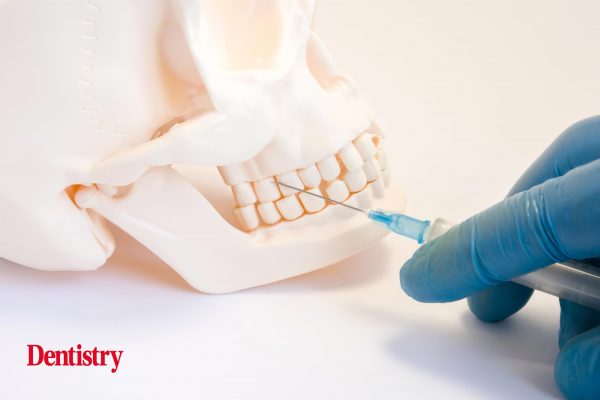Successful local anaesthesia is paramount to almost all that we do in clinical dentistry.
Patients frequently cite dental pain and dental injections for non-attendance. If we can achieve pain-free dentistry, we also gain patient satisfaction, as well as making our work less stressful.
My research interest over many years has been local anaesthesia. I have had the pleasure of working with the team at Septodont throughout. Septodont supports independent research internationally and seeks advice and evidence from leading research teams on product development. This is apparent in the quality of its pain management range.
Successful anaesthesia starts with selecting the right equipment and having confidence in its quality. Here are my 10 top tips on anaesthetic equipment.
Buy quality
When it comes to purchasing new needles, remember that not all needles are the same! Look for a product with a multifaceted bevel design that aids needle penetration and reduces needle deflection as it passes through the tissue.
Check for a high manufacturing standard and a good quality assurance system.
Inferior needles may cause greater injection pain and tissue damage due to bluntness, metal barbs or shards and damaged tips.
Length
It is useful to have long and short needles for blocks and infiltrations, respectively. An ultra-short needle may be useful for periodontal ligament injections, although not necessary.
Never use a short needle for an inferior alveolar block: although needle breakage is rare with modern needles, it generally occurs at the attachment to the plastic hub.
Do not bend needles, which will weaken them. You should not insert the needle all the way to the hub. If the needle breaks it will be difficult to retrieve.
Diameter
Needle diameter or gauge refers to the external diameter of the needle, not the internal diameter, which has complex relationship to flow, and there is little advantage in increasing diameter.
Patients are unable to discriminate between the commonly used needle diameters in terms of injection pain.
Use safer sharps
Mandated by UK health and safety law, you should use a safer sharps system where feasible.
There are several different designs are available, get samples from company representatives and find one that you feel comfortable using.
Avoid resheathing needles
Any form of needle resheathing device carries a risk. It is easy to be distracted while doing this.
There is also a risk when removing the sheathed contaminated needle for disposal and cleaning of the syringe.
Think about the risks to the whole team.
Disposable items
Fully disposable syringe systems may be cost effective. The cost of a single use safety syringe may be less than that of small-scale sterilisation costs. Whereas partially disposable syringes, where the handle is reusable, will save on waste. Consider the environmental impact of waste and the disposal costs for contaminated sharps.
Single injection
Single-use systems can be reused on the same patient at a single visit. However, surgical grade sharps blunt very easily and needle penetration force and pain increase with each injection. Best practice is to use a new needle for each injection administered.
Aspiration system
Whatever system you use, make sure that you are familiar with the aspiration system. Some syringes need a compatible anaesthetic cartridge, with some designs no longer available.
Take a moment to check the syringe you are using.
Change
If you are changing to a safety syringe for the first time, or changing suppliers, make sure you are aware of any differences in set-up or use. It takes time to adapt to change, so be patient with the learning process.
Needlestick
Your practice should have a needlestick policy in place in the unfortunate event that this occurs. Make sure you are familiar with it.
Supported by Septodont
With a research interest and international recognition in the field of dental anaesthesia, having published extensively, lectured internationally, and awarded a European Federation for the Advancement of Anaesthesia in Dentistry prize, Mr Ian Corbett will be sharing his thoughts in each issue of Clinical Dentistry on all things anaesthesia – from solutions, storage, and techniques to measuring success and dealing with failure. In this first article, equipment considerations are discussed.
This article first appeared in Clinical Dentistry magazine. You can read the latest issue here.
The post Top ten tips on local anaesthesia equipment appeared first on Dentistry.co.uk.


